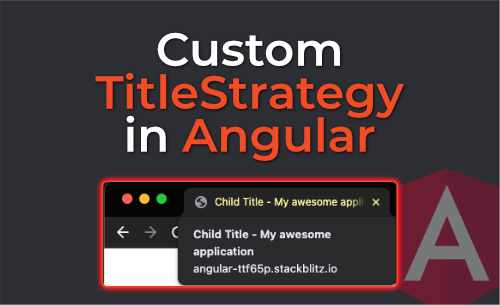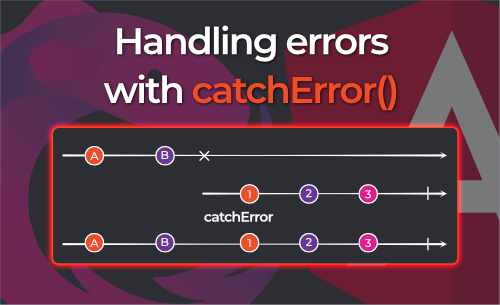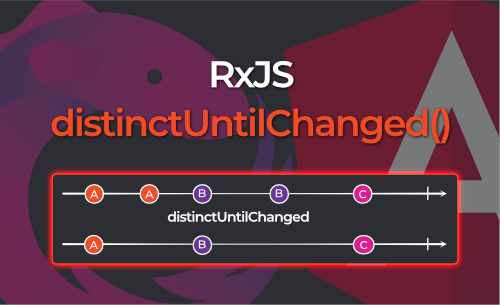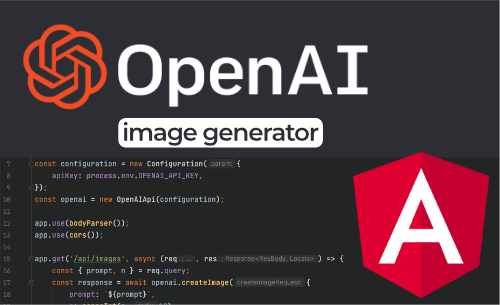Generating icon components from SVG files with NX and Angular

Generating Icon Components from SVG files with NX and Angular
Overview
TLDR: Find the complete source code in this GitHub repository
This guide will show you how to leverage NX to automatically convert SVG files into Angular components. You can follow along this guide or check out the complete source code to figure it out yourself. By the end of this tutorial, you’ll have:
- A scalable system for managing SVG icons in your NX workspace
- Type-safe icon components with optimized SVG code
Prerequisites
- An existing NX workspace
- Familiarity with Angular and NX
Project structue overview
Before we start, let’s understand the project structure we’ll create:
your-nx-workspace/
├── libs/
│ └── shared/
│ ├── ui-icons/ # Generated icon components
│ │ └── src/
│ │ └── lib/
│ │ └── generated/ # Folder for auto-generated icon components
│ └── tool-icon-generator/ # Generator tool
│ └── src/
│ └── lib/
│ ├── icons-source/ # Source SVG files
│ └── generate-icons.ts
└── tools/
└── nx-plugin/
└── src/
└── generators/
└── icon-generator/ # The actual generator
Setting Up the Libraries
Creating the Libraries
We’ll create two separate libraries:
shared-ui-icons: An Angular library for our generated icon componentsshared-tool-icon-generator: A JavaScript library for SVG sources and generation logic
We use an Angular library for the components and a plain JavaScript library for the generation tools since the latter doesn’t require any Angular features.
Generate the libraries
# Generate the UI icons library
npx nx g @nx/angular:library --name=shared-ui-icons \
--tags=scope:shared,type:ui \
--directory=libs/shared/ui-icons
# Generate the icons source library
npx nx g @nx/js:library --name=shared-tool-icon-generator \
--tags=scope:shared,type:tool \
--directory=libs/shared/tool-icon-generator
Setting Up the NX Plugin and Generator
The NX plugin will provide a custom generator that will be called from the generate-icons.ts script. This approach offers:
- Consistent icon component generation
- Built-in optimization
Add the NX plugin capability
# Only needed if you do not have an nx/plugin yet
npx nx add @nx/plugin
nx g @nx/plugin:plugin tools/nx-plugin
Create the icon generator
nx generate @nx/plugin:generator tools/nx-plugin/src/generators/icon-generator \
--name=icon-generator
Building the Icon Generator
Optimizing SVG Files with SVGO
SVGO (SVG Optimizer) is a Node.js tool that optimizes SVG files by removing redundant information and applying various transformations. It can significantly reduce SVG file size while preserving the visual output.
- Install SVGO:
npm install -D svgo - Create
svgo.config.jsin thetools/nx-plugin/src/generators/icon-generatorfolder:
module.exports = {
plugins: [
{
name: 'preset-default',
params: {
overrides: {
removeViewBox: false,
},
},
},
'removeDimensions',
'cleanupAttrs',
'removeXMLProcInst',
'removeDimensions',
'cleanupIds',
'removeTitle',
'removeUselessStrokeAndFill',
],
};
Setting Up Component Templates
Create __selector__.component.ts.template in the tools/nx-plugin/src/generators/icon-generator/files folder:
import { ChangeDetectionStrategy, Component } from '@angular/core';
import { CommonModule } from '@angular/common';
@Component({
selector: 'app-icon[<%= selector %>]',
standalone: true,
template: `<%- svgCode %>`,
changeDetection: ChangeDetectionStrategy.OnPush,
styleUrls: ['../icon.ui-component.scss']
})
export class <%= componentName %>Component {
}
Adding Base Styles
Create libs/shared/ui-icons/src/lib/icon.component.scss:
:host {
display: block;
box-sizing: content-box;
width: 24px;
height: 24px
}
Implementing the Generator
Update the generator files with the following content:
// tools/nx-plugin/src/generators/icon-generator/generator.ts
import * as path from 'path';
import { execSync } from 'child_process';
import { formatFiles, generateFiles, Tree } from '@nx/devkit';
import { IconComponentGeneratorSchema } from './schema';
function optimizeSvg(svgFilePath: string): string {
const svgoConfigPath = path.join(__dirname, 'svgo.config.js');
return execSync(`svgo --config="${svgoConfigPath}" --pretty --input=${svgFilePath} --output=-`, {
encoding: 'utf8',
});
}
export async function iconComponentGenerator(
tree: Tree,
options: IconComponentGeneratorSchema
): Promise<void> {
const projectRoot = `libs/shared/ui-icons/src/lib/generated`;
const { iconPath, ...params } = options;
const optimizedSvgContent = optimizeSvg(iconPath);
generateFiles(tree, path.join(__dirname, 'files'), projectRoot, {
...params,
svgCode: `${optimizedSvgContent}`,
});
await formatFiles(tree);
}
export default iconComponentGenerator;
// tools/nx-plugin/src/generators/icon-generator/schema.d.ts
export interface IconComponentGeneratorSchema {
componentName: string;
selector: string;
iconPath: string;
}
tools/nx-plugin/src/generators/icon-generator/schema.json:
{
"$schema": "http://json-schema.org/schema",
"$id": "IconComponent",
"title": "",
"type": "object",
"properties": {
"selector": {
"type": "string",
"description": "",
"$default": {
"$source": "argv",
"index": 0
},
"x-prompt": "What selector would you like to use?"
},
"iconPath": {
"type": "string",
"description": "",
"$default": {
"$source": "argv",
"index": 0
},
"x-prompt": "What iconPath would you like to use?"
},
"componentName": {
"type": "string",
"description": "",
"$default": {
"$source": "argv",
"index": 0
},
"x-prompt": "What componentName would you like to use?"
}
},
"required": ["selector", "iconPath", "componentName"]
}
Creating the icon generation script
- Create a folder structure:
libs/shared/tools-icon-generator/src/lib/ └── icons-source/ # Place your SVG files here - Create
generate-icons.tsinlibs/shared/tool-icon-generator/src/lib/
import * as fs from 'fs';
import * as path from 'path';
import { execSync } from 'child_process';
const svgSourceFolderName = 'icons-source';
const svgSourceFolderPath = path.join(__dirname, svgSourceFolderName);
const targetFolderName = 'generated';
const targetBasePath = 'libs/shared/ui-icons/src/lib';
const targetFolderPath = path.join(targetBasePath, targetFolderName);
const barrelFilePath = path.join(targetBasePath, targetFolderName, 'index.ts');
/* Arguments */
const args = process.argv.slice(2);
const generateAllIcons = args.find((arg) => arg.includes('--all'))?.split('=')[1] === 'true';
/* Util functions */
function deleteFolderIfExists(folder: string) {
if (fs.existsSync(folder)) {
fs.rmSync(folder, { recursive: true, force: true });
}
}
function createFolderIfItDoesNotExists(folder: string): void {
if (!fs.existsSync(folder)) {
fs.mkdirSync(folder, { recursive: true });
}
}
function kebabToPascal(kebabCaseString: string): string {
return kebabCaseString
.split(/[-_]/)
.map((word) => word.charAt(0).toUpperCase() + word.slice(1).toLowerCase())
.join('');
}
function generateComponent(selector: string, componentName: string, svgPath: string): void {
const command = `nx generate @nx-angular-icons/nx-plugin:icon-generator --componentName="${componentName}" --selector="${selector}" --iconPath="${svgPath}" --quiet`;
execSync(command, { stdio: 'inherit' });
}
function generateBarrelFile(icons: Map<string, string>): void {
const exportStatements = Array.from(icons).map(
([selector]) => `export * from './${selector}.component';`
);
fs.writeFileSync(barrelFilePath, `${exportStatements.join('\n')}`);
}
/* Main script */
if (generateAllIcons) {
console.log(`✅ Deleting the output folder`);
deleteFolderIfExists(targetFolderPath);
}
createFolderIfItDoesNotExists(targetFolderPath);
const sourceSvgFiles = fs.readdirSync(svgSourceFolderPath);
const icons = new Map<string, string>();
console.log(`✅ Start generating icon components`);
sourceSvgFiles.forEach((svgFile) => {
const selector = svgFile.replace('.svg', '').toLowerCase();
const fileExists = fs.existsSync(path.join(targetFolderPath, `${selector}.component.ts`));
if (generateAllIcons || !fileExists) {
const componentName = `${kebabToPascal(svgFile.replace('.svg', ''))}Icon`;
const svgFilePath = path.join(__dirname, svgSourceFolderName, svgFile);
generateComponent(selector, componentName, svgFilePath);
console.log(`✅ Generated ${selector}`);
} else {
console.log(`✅ Did not regenerate ${selector}`);
}
const componentNameMatch = fs
.readFileSync(path.join(targetFolderPath, `${selector}.component.ts`), 'utf8')
.match(/export class (.*)/);
if (componentNameMatch && componentNameMatch[1]) {
icons.set(selector, componentNameMatch[1]);
}
});
console.log(`✅ Done generating icon components`);
console.log(`✅ Generate barrel file (index.ts)`);
generateBarrelFile(icons);
console.log(`🏁 Icon components generated under:`, `${targetFolderPath}/${targetFolderName}`);
Configuring build scripts
Update libs/shared/tool-icon-generator/project.json
{
"targets": {
"generate": {
"executor": "nx:run-commands",
"options": {
"commands": [
"ts-node libs/shared/tool-icon-generator/src/lib/generate-icons.ts --all={args.all}"
]
}
}
}
}
Optional: Add convenience scripts to your root package.json
{
"scripts": {
"icons:generate": "nx run shared-tool-icon-generator:generate",
"icons:generate-all": "nx run shared-tool-icon-generator:generate --all"
}
}
Usage
Generating icons
To generate only new icons (those not already in the generated folder):
npm run icons:generate
# or
nx run shared-tool-icon-generator:generate
To regenerate all icons (useful after updating SVGO config or component templates):
npm run icons:generate-all
# or
nx run shared-tool-icon-generator:generate --all
Using generated icons
The generated icons can be used in several ways in your Angular components:
// 1. Static usage with selector
import { ArrowDownIconComponent } from '@your-workspace/shared/ui-icons';
@Component({
// ...
imports: [ArrowDownIconComponent],
template: `<app-icon[arrow-down] />`
})
export class MyComponent {}
// 2. Dynamic usage with NgComponentOutlet
import { ArrowDownIconComponent, ArrowUpIconComponent } from '@your-workspace/shared/ui-icons';
@Component({
// ...
imports: [NgComponentOutlet, ArrowDownIconComponent, ArrowUpIconComponent],
template: `<ng-container *ngComponentOutlet="currentIcon()"></ng-container>`
})
export class MyComponent {
currentIcon = signal(ArrowDownIconComponent);
// toggleIcon can be called from a button click or similar
toggleIcon() {
this.currentIcon.update(current =>
current === ArrowDownIconComponent ? ArrowUpIconComponent : ArrowDownIconComponent
);
}
}
Best Practices
Version Control
- Commit generated icons: Include generated icon components in your version control:
- Prevents unnecessary regeneration during builds
- Makes icon changes trackable through Git history
- Ensures consistent icons across the team
- Review Changes: When regenerating all icons (
--allflag), review the Git diff to ensure changes are intentional.
SVG source files
Have naming conventions for the icons, in a large company this naming needs to be consistent between the UX team and the developers.
action-name.svg // e.g., arrow-down.svg
object-name.svg // e.g., shopping-cart.svg
state-name.svg // e.g., check-circle.svg
Documentation
- Create an overview of available icons with Storybook for example.
- Add documentation for how to use the icon generator and generated components.
Development workflow
Adding new icons
# 1. Add SVG file to icons-source/
# 2. Generate only new icons
npm run icons:generate
# 3. Test the new icon
# 4. Commit both source SVG and generated component
Updating Existing Icons
# 1. Replace SVG file in icons-source/
# 2. Use --all flag to regenerate
npm run icons:generate-all
# 3. Test the updated icon
# 4. Commit changes
Wrapping up
That’s all folks! This initial setup might take a bit of time, but it’s worth it for the scalable, type-safe and consistent way of handling icons in your NX workspace. Check out the complete source code on Github.
Other articles you might like
-

Angular + NGINX + Docker
-

How to Call the OpenAI API Directly from Angular (with streaming)
-

Custom TitleStrategy in Angular
-

RxJS catchError: error handling
-

RxJS distinctUntilChanged: filtering out duplicate emissions
-

RxJS combineLatest: how it works and how you can use it in Angular
-

Delaying streams with RxJS debounceTime
-

Real-life use cases for RxJS SwitchMap in Angular
-

Transforming data with the RxJS Map operator
-

Typesafe view models with RxJS and Angular
-

Reactively storing and retrieving URL state in Angular
-

Let's build an Image Generator with OpenAI and Angular
-

Why you should externalize your Angular Configuration
 Written by Bryan Hannes
Written by Bryan Hannes